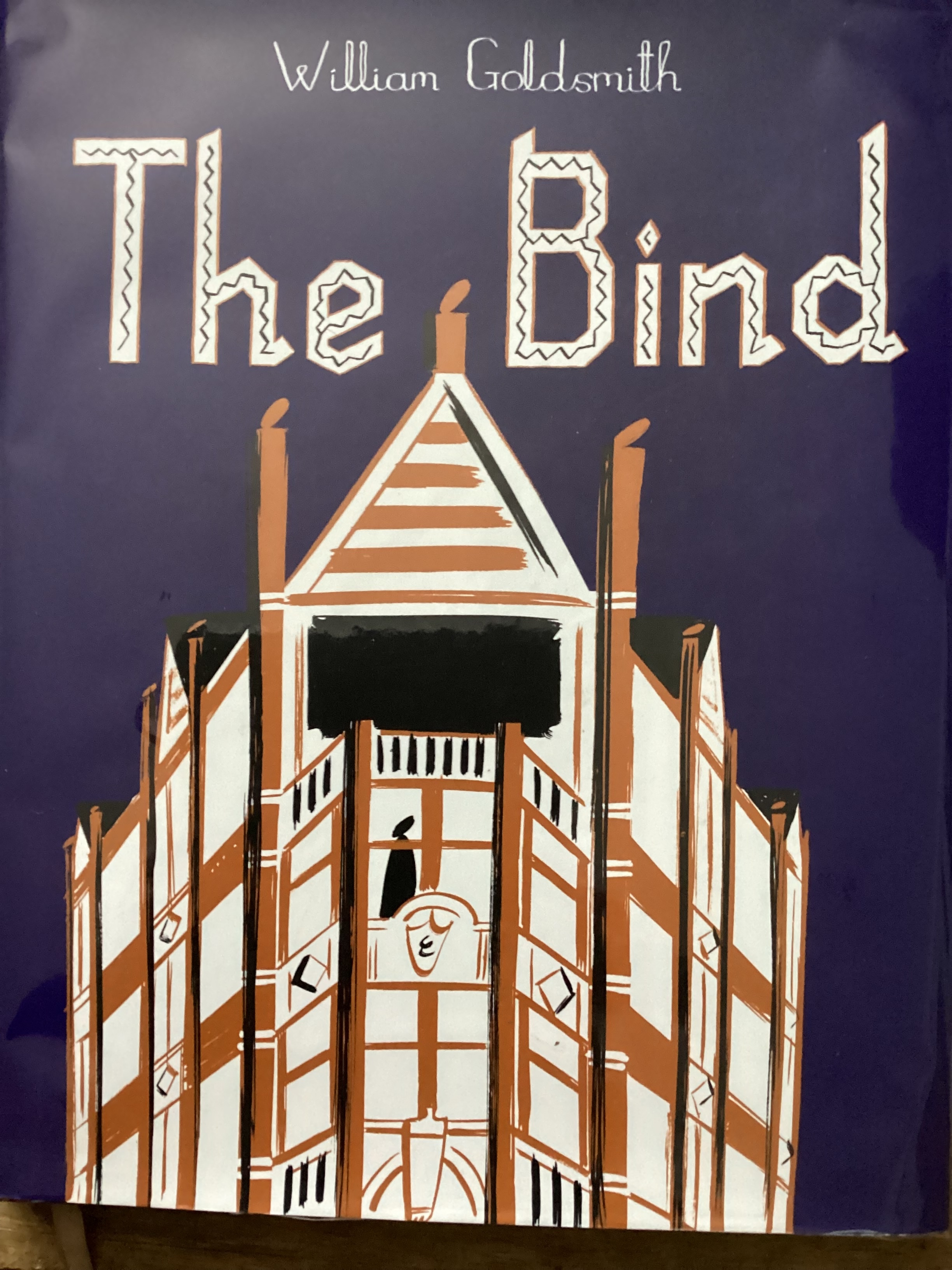Inspiring Older Readers
 posted on 21 Apr 2024
posted on 21 Apr 2024
The Bind by William Goldsmith
In my experience graphic novels tend to divide opinion. Those who love them, really love them and those who don’t tend to dismiss them as ‘not real reading’ and have very little to do with them. I have to confess that I find myself with a foot in each camp – I’m happy to accept that they’re often skilfully constructed and can deal with some hefty social and emotional issues but I also find myself frequently unable to finish them (in fact I often give up on them after only a few pages).
There’s no doubt in my mind that you have to learn how to read graphic novels, especially those aimed at an adult audience, and that it’s a skill I have not wholly mastered. I do think, however, that my heavy diet of comics as a child and young teenager made me sympathetic to the format – even if, all these years on, I sometimes find myself wondering why I’m trying to read what feels like an extended, overly complex comic-strip.
I also don’t think it helps that graphic novels have become a confusingly amorphous genre. Pop into your local Waterstones and you’ll find a dedicated section given over to graphic novels without too much of an attempt to distinguish the huge differences in subject matter and approach. You’ll find Japanese Manga alongside graphic interpretations of classic novels alongside teenage angst and self-help. All of this presented in a way that subliminally tells you that graphic novels are for the young and trendy.
So, in the end I don’t try too hard to get immersed in the graphic novel genre but I do keep my eyes open for anything that might come along in that line which presents a new way of telling stories about those subjects closest to my heart. When I saw William Goldsmith’s The Bind, I knew this was a graphic novel I just had to give some houseroom to.
The book tells the fictional story of the tragedy that engulfed the premier early 20th century bookbinding firm of Egret. Narrated by the ghostly spirit of Egret’s founder, Garrison Egret, it details the ultimately destructive tale of his heirs – the studiously business-like Guy and his younger brother – the artistically gifted but fecklessly vain, Victor.
Egrets has built up a reputation as the very best in the business and, while Guy is intent on keeping the business solid and stable, Victor wants glory. He plans to design and oversee the production of the most lavish, most expensively bound book ever. A Moonless Land by E. Skirmish will be blinged to the utmost – crusted with gems, sold for a fortune and make his name immortal in the ranks of the bookbinding world.
But, that, it transpires, isn’t enough for him. Once the book is made he wants to keep it for himself. He will trick the customer by making a worthless copy that will be good enough to fool his buyer and allow him to retain this beauty for himself. All well and good – as far as it goes. But what he doesn’t know is that his brother Guy is wise to his plan and he’s busy making a copy of the copy…..
You’ve probably guessed by now that this isn’t heading to a good place – but I’ll leave that for you to discover for yourself.
There’s plenty to like here and the story of the double double-cross is a nice conceit. But there are problems too. The ghostly narrator isn’t, I think, necessary and, from a purely artistic, illustrative perspective, rather crudely done. I also wasn’t entirely sold on the crucial relationship between the brothers – it felt as if that needed more substance, more hinterland to be genuinely convincing.
But, all in all, I enjoyed it and pretty much anything that makes a book a central character is good in my view. It’s almost 10 years old now and so copies can be obtained on the second-hand for well under £15 in hardback and it’s a handsomely done bit of binding in its own right.
Terry Potter
April 2024



